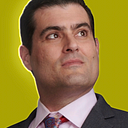Are Your Beliefs Counterfeit? Test Them Now
Dear Magicians,
Let’s talk about testing truth.
Picture an ancient marketplace. A merchant holds a coin. He throws it against a stone, known as a touchstone, and listens. That sound? It could mean the difference between eating and starving. The Greeks called this “dokimazein”, in Latin it was saggitore — to assay. To test. Even now, we rub dollar bills between our fingers. For good reason — the stakes were life and death.
The Sound of Truth
One wrong call, one jingle misinterpreted by an assayer, could destroy lives. Counterfeit coins didn’t just ruin the merchant who accepted them. They poisoned entire economies. In some places, passing fake currency meant death. Think about that pressure. Every coin. Every test. Life or death.
The assayer’s tools were ingeniously precise and simple. Their main instrument? A touchstone — a dark piece of jasper or basanite with a surface fine enough to capture streaks of metal. The process was elegant: rub the coin against stone, apply acidic solutions, and watch. Pure metals would resist; counterfeits would dissolve. They even kept “touch needles” — reference samples of known purity — to compare results. Simple. Portable. Reliable. Like a pocket-sized chemistry lab for the ancient world. But it wasn’t the cost of the tools that made the assayer’s work so valuable — it was his sagacity, his wisdom accrued from innumerable encounters with frauds, charlatans and grifters. Much like today’s digital landscape. Our modern touchstones exist in unexpected places.
Modern Touchstones in a Digital Age
Take Twitter’s Community Notes, for instance. When questionable information streaks across our screens, these collaborative fact-checks act like an acid test — dissolving falsehoods while letting truth resist and shine. Or consider Wikipedia’s edit history, showing every change, every “assay” of information in real-time. Now, neither source should be accepted unalloyed. But taken together they offer some hope of detecting Fools and their gold.
In 1623, Galileo wrote a book called “The Assayer.” He said the universe speaks in math. Beautiful idea. But even Galileo got things spectacularly wrong. In this book he insisted comets were just atmospheric phenomena, not actual objects in space. His rival Grassi was right. Galileo was wrong. Really wrong.
And if we don’t learn from his mistakes — that brilliant minds can still make brilliant blunders — the debasement of the intellectual economy is assured.
The Virus of Unexamined Ideas
We’re so careful with money. We check every bill. But ideas? If they agree with our expectations, we let them slide right in. Unchecked. Untested. Confirmation bias is a hell of a drug.
A doctor’s wrong assumption kills patients. A voter’s unverified belief corrupts democracy. A scientist’s stubborn theory blocks progress. Worse yet, bad ideas spread faster than any fake coin ever could.
Each unexamined thought becomes a vector for more unexamined thoughts, like a virus. But instead of infecting bodies, it infects minds. Disciplines. Communities. Generations.
We need assayers now more than ever. Not for coins. For concepts. Not for money. For minds. Here’s the real question: What beliefs are you carrying without testing? What price are you paying? What price are we all paying? Think about it.
Test it.
Refine it until you’ve turned lead into gold if you have to. But never stop seeking the sound of truth.
Until next time, have a M.A.G.I.C. Week,
Brian
Appearance
It was fantastic to see my three-hour conversation with Dr. Andrew Huberman summarized so beautifully by my friends at Podcast Notes! I read PN every week (not sponsored) — it saves hours upon hours and puts my favorite episodes into context with fantastically thorough links and actionable takeaways!
Genius
In my conversations with Andrew, we covered a lot of information about the human eye and even how to improve your eyes for astronomy. But this study is still one of the most brilliant stories in recent months.
Human stem cells were used to seal a hole in a monkey’s retina, potentially improving its vision and offering a new method for treating age-related sight loss. Researchers implanted retinal precursor cells into the retina of a snow monkey, demonstrating promising results in vision tests.
A rare bit of good news we all deserve!
Image
Does anyone else feel like we’re hitting warp speed?
Conversation
In this video, I’ll explain the science behind the rare and stunning Green Flash — the moment when the sun briefly appears green just before it sets or rises. I’ll debunk some common myths and give you practical tips on how to capture this fleeting phenomenon with simple camera settings. We’ll dive into the physics of refraction, dispersion, and scattering, and discuss how climate change impacts the visibility of the Green Flash. It’s a real physical event, not an illusion — so watch and learn how to capture it yourself!
Advertisement
My Intro to Cosmology course is now appearing exclusively at Peterson Academy. Join me on the 9-hour captivating journey through the cosmos, exploring its vastness, the tools used to unravel its mysteries, and the groundbreaking discoveries that have shaped our understanding of the universe.
We examine the evidence for an expanding universe, the forces driving its evolution, and the cosmic fossils that shed light on its distant past and future. The course also delves into the enigmatic concepts of dark matter and energy, their roles in the universe’s structure and fate, and their ongoing efforts to unravel these cosmic mysteries.
Enroll now for immediate access!
I’ve gotten great feedback from dozens of my PA students. Join us on a cosmic adventure!
Upcoming Episode
Huge news! Neil Turok is coming back on the Into the Impossible Podcast! Drop some questions for him here about his fascinating new theory of the the “Mirror Universe”!
